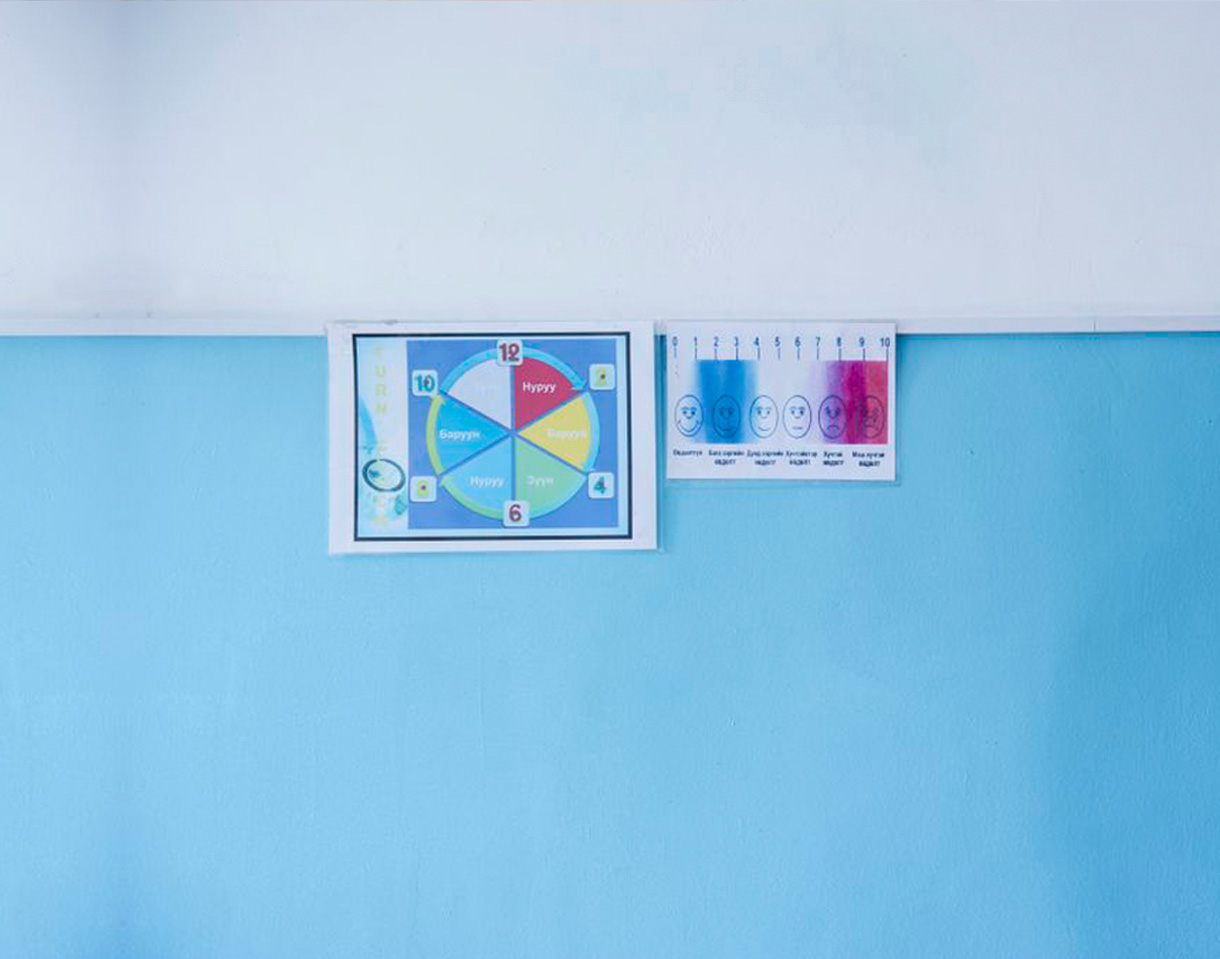Rooms
A decade ago, nobody in Mongolia knew about hospices and palliative care. Patients who were suffering from advanced illnesses were simply left at home, stamped with the diagnosis of “Untreatable”. Things have since changed, fast. Under the leadership of Dr Odontuya Davaasuren and her colleagues at the Mongolian Palliative Care Society, Mongolia is now one of the 35 countries in the world alongside the U.S and Australia where palliative care is integrated into main health policies.
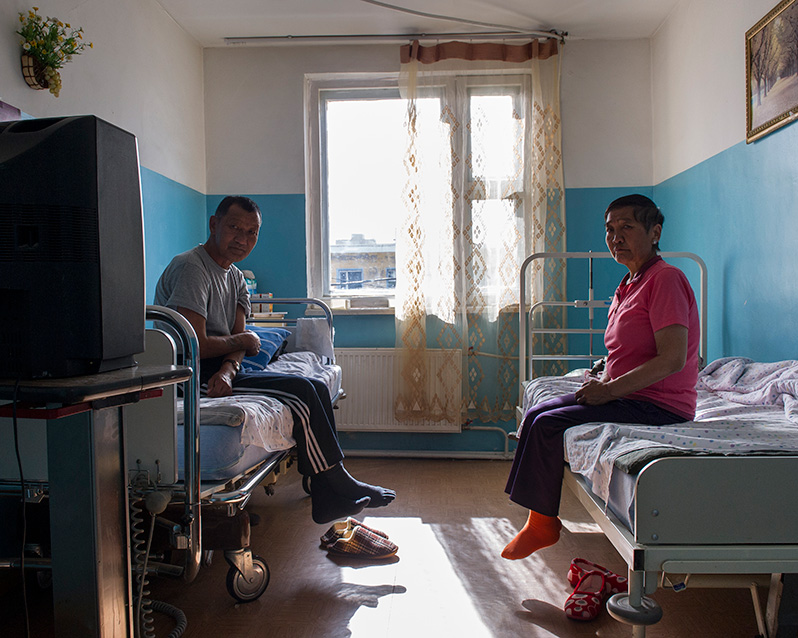
Bany, 64 and wife, Tserenchimed, 59 are retired railway workers who live in the Songino Kairkhan District, a one-hour bus ride away from Hope Hospice. As Bany has lung cancer and his wife has liver cancer, they often suffer from painful symptoms like difficulties in breathing and swallowing. Having learnt about Hope Hospice from a TV programme, the couple checks in regularly to treat their pain.
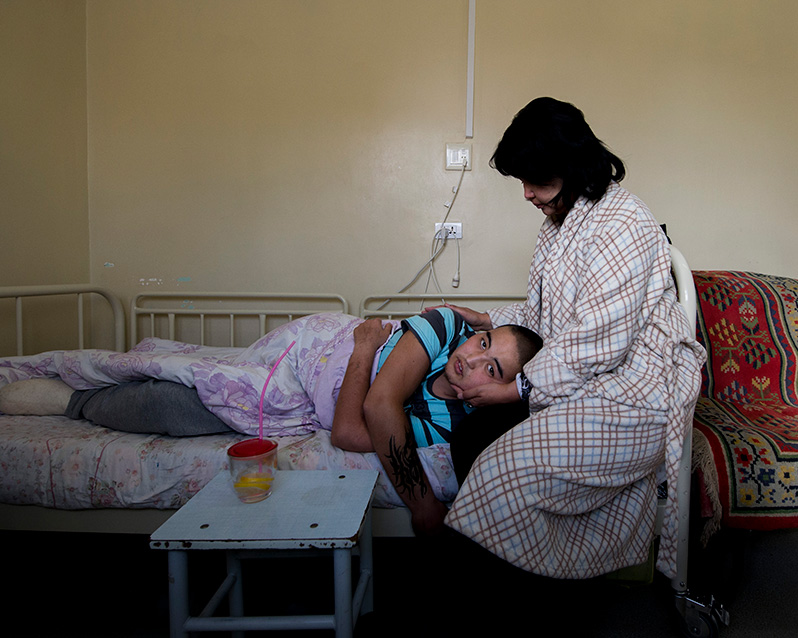
Tumur Chudur, 18, is a student who just finished high school. He discovered he had bone cancer about a year ago and amputated his right leg soon after. Cancer cells have since spread to his kidney and lungs. His mother, Ankh Tuya, who sleeps on a makeshift bed in his ward said: “My son was in so much pain so I decided to bring him to the National Cancer Center to receive palliative care. Now he is comfortable and I want him to stay awhile longer.”
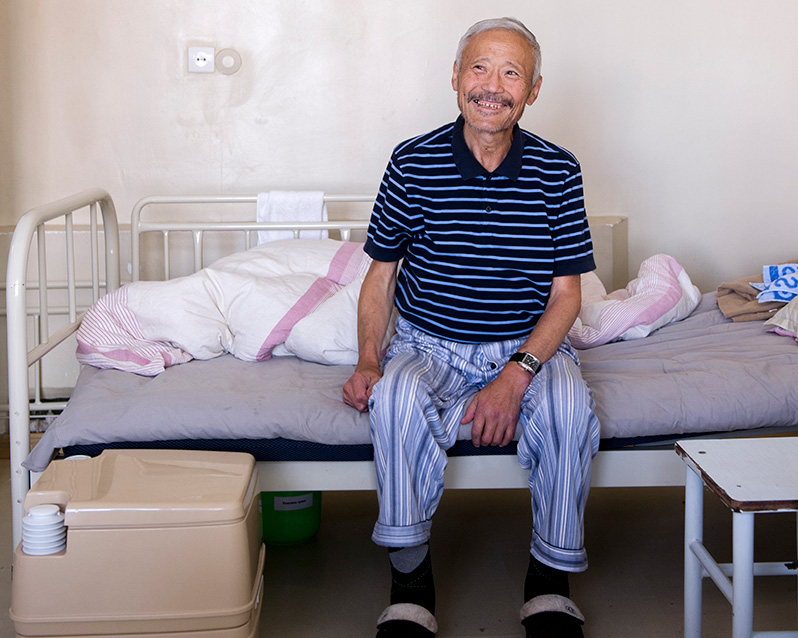
“Just tell me the situation frankly. I’m 65 and old enough to handle it,” said Sukh Bold, a former army political worker diagnosed with liver cancer. Although he underwent an operation, it didn’t help because his cancer had spread to the stomach. “Even if I had no success I’m grateful because with palliative care, I can see the sun longer, even if it is just for a number of days. I did all that I wanted to do and I’m ready if I have to go.”
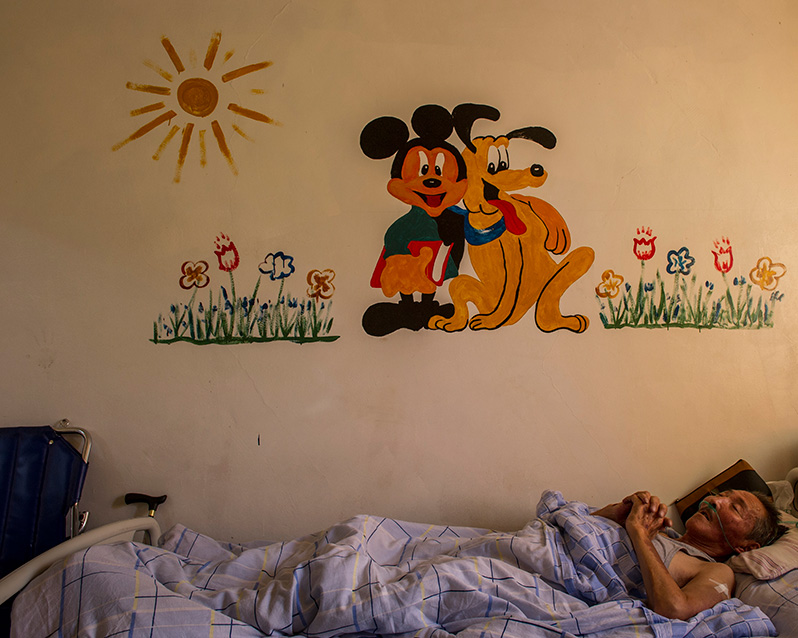
Ochirsaikhan, 70, has pulmonary cancer. He arrived at Hope Hospice in severe pain and was warded into the children’s ward because the other beds were occupied. He breathes with the help of a ventilator and uses a ventral patch, a mesh device attached to his stomach, to relieve pain from inflammation in his abdominal region.
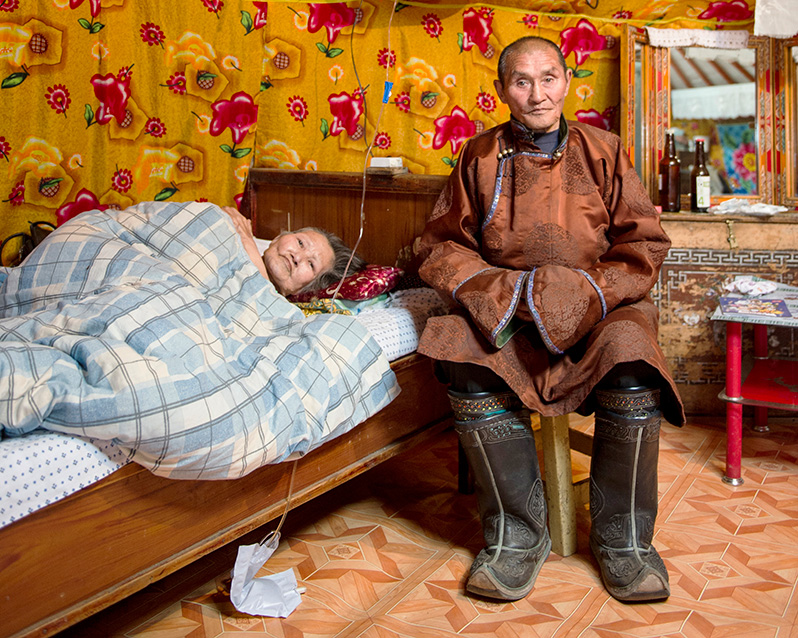
Rentsendavaa, 82, a retired nurse in an army hospital, has been caring for his wife, Tumurkhuu Erdene, 74, who suffered from liver cancer for the past three years. “We tried so many things but unfortunately her body is not improving. I understand that I have to let her go. The hardest part is if she’s in pain and I don’t know what to do.” After she passed away in late 2012, the couple’s 36-year-old son, who also contracted liver cancer, died a month later, leaving the old man in depression. Rentsendavaa receives support from the staff of Hope Hospice, where his wife and son stayed at when they were alive.
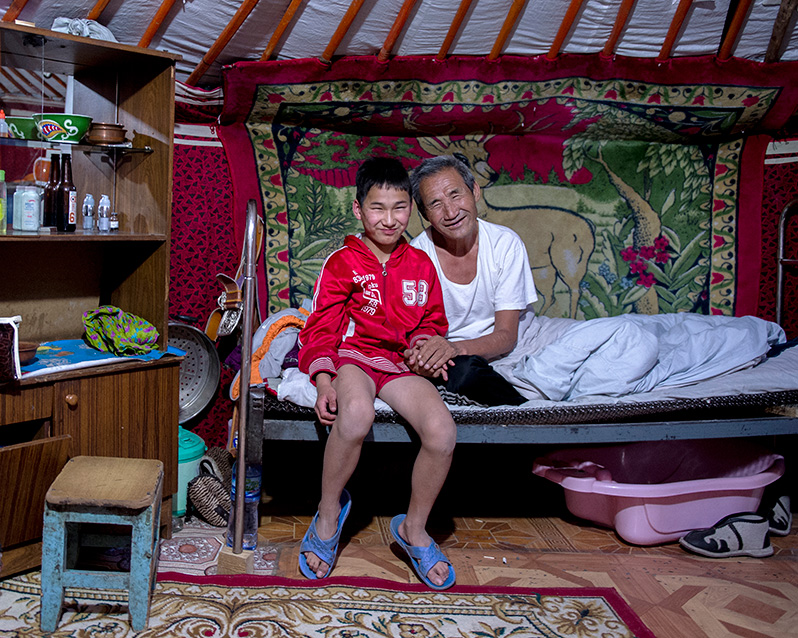
Shinekhuu, a disabled 14-year-old student with speech impairment, helps to care for his grandfather, Sukhbaatar Doomoi, 58, who is blind and has liver cancer. Sukhbaatar has been receiving home palliative care support from Grace Hospice since 2008. “I feed my grandfather, take his urine out and keep him company. It feels good to be able to take care of him.”
